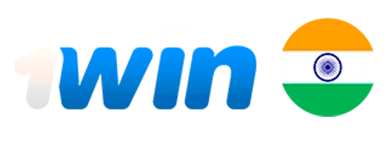 Topic Cluster Planning – Boost Topical Authority Like a Pro!
Topic Cluster Planning – Boost Topical Authority Like a Pro!
How the Power of IoT and Remote Patient Monitoring Save Lives
Written by Jack » Updated on: February 21st, 2025
Healthcare is rapidly transforming with the integration of Internet of Things (IoT) technology. According to Grand View Research, the global IoT in healthcare market was valued at $180.5 billion in 2022 and is projected to grow at a compound annual growth rate (CAGR) of 19.8% from 2023 to 2030. Remote patient monitoring (RPM) has emerged as a critical component of this transformation, enabling real-time tracking of patient health outside clinical settings.
With an increasing number of patients managing chronic conditions, the demand for continuous health monitoring is rising. IoT-driven remote patient monitoring offers a solution by connecting patients and healthcare providers through smart devices and cloud platforms. This technology facilitates early diagnosis, improves treatment outcomes, and enhances overall patient care.
Understanding IoT and Remote Patient Monitoring
What is IoT in Healthcare?
The Internet of Things (IoT) refers to a network of interconnected devices that collect, exchange, and analyze data. In healthcare, IoT devices include smart wearables, medical sensors, and remote monitoring tools that transmit patient data to healthcare providers. This continuous data flow supports real-time decision-making and early detection of health issues.
IoT in healthcare allows seamless communication between devices, patients, and healthcare providers. Devices such as smartwatches, fitness trackers, and advanced medical sensors collect data on heart rate, glucose levels, blood pressure, and more. This data is transmitted securely to cloud platforms, where it can be analyzed for insights and alerts.
What is Remote Patient Monitoring (RPM)?
Remote patient monitoring (RPM) involves using digital technology to collect health data from patients in non-clinical settings, such as their homes. This data includes vital signs like heart rate, blood pressure, glucose levels, oxygen saturation, and more. Healthcare providers can access this information remotely, enabling timely interventions and reducing hospital readmissions.
RPM devices collect patient data continuously, allowing healthcare providers to detect potential health issues before they become critical. For example, a sudden increase in blood pressure or irregular heart rhythms can trigger alerts, prompting medical intervention. This real-time monitoring improves patient outcomes and reduces healthcare costs.
Key Components of IoT-Based Remote Patient Monitoring
Effective remote patient monitoring relies on several key components:
- IoT Devices: These include wearable fitness trackers, smartwatches, glucose monitors, pulse oximeters, and advanced medical sensors that collect real-time patient data.
- Data Transmission: IoT devices transmit data securely via Bluetooth, Wi-Fi, or cellular networks to cloud platforms.
- Cloud Platforms: These platforms store, process, and analyze patient data, making it accessible to healthcare providers.
- Healthcare Dashboards: Providers use dashboards to monitor patient trends, receive alerts, and make informed decisions.
- Mobile Applications: Patients can access their health data and receive reminders for medication or lifestyle adjustments.
Benefits of IoT and Remote Patient Monitoring
1. Early Detection of Health Issues
IoT-enabled remote patient monitoring allows continuous tracking of vital signs. For instance, an abnormal spike in blood pressure or heart rate can trigger an alert, prompting immediate medical attention. This early detection helps prevent complications and reduces emergency room visits.
RPM devices collect data in real-time, allowing healthcare providers to identify subtle changes in patient health. For example, a heart patient experiencing irregular rhythms can receive timely treatment, preventing a potential heart attack. Early detection ensures that minor issues do not escalate into severe conditions.
2. Improved Chronic Disease Management
Chronic diseases like diabetes, hypertension, and heart disease require continuous monitoring. RPM devices provide real-time insights into patient conditions, enabling personalized treatment plans. For example, continuous glucose monitors (CGMs) help diabetic patients maintain optimal blood sugar levels by providing instant readings and alerts.
Patients with hypertension can use smart blood pressure monitors to track their readings daily. This data is shared with healthcare providers, who can adjust medications or recommend lifestyle changes based on trends. This approach ensures better disease management and prevents complications.
3. Enhanced Patient Engagement and Adherence
With mobile apps and wearable devices, patients can actively manage their health. Regular reminders for medication, exercise, and follow-up appointments improve adherence to treatment plans. Studies show that patients engaged in their care experience better health outcomes.
For example, a patient with heart disease can receive daily reminders to take medication, monitor vital signs, and perform prescribed exercises. This engagement ensures that patients stay on track with their treatment plans, improving long-term health outcomes.
4. Reduced Hospital Readmissions
Remote monitoring helps identify early signs of deterioration, allowing timely interventions that prevent hospital readmissions. According to the Agency for Healthcare Research and Quality (AHRQ), effective RPM programs can reduce hospital readmission rates by up to 25%.
Patients recovering from surgery can use wearable devices to track their recovery progress. Any abnormal readings, such as elevated temperature or heart rate, trigger alerts for healthcare providers. Early intervention prevents complications and reduces the need for hospital readmissions.
5. Cost Savings for Patients and Healthcare Providers
Continuous monitoring reduces the need for frequent hospital visits and emergency care, resulting in significant cost savings. A study by the National Institutes of Health (NIH) found that RPM programs can lower healthcare costs by up to 20%.
For healthcare providers, remote monitoring reduces the burden on clinical staff, allowing them to focus on patients requiring immediate attention. For patients, fewer hospital visits mean lower out-of-pocket expenses and improved quality of life.
Real-World Applications of IoT and RPM
Several healthcare systems and IoT development companies have implemented RPM solutions with remarkable success. Some examples include:
- Heart Failure Monitoring: Patients with congestive heart failure use IoT-enabled weight scales and blood pressure monitors. An increase in weight due to fluid retention triggers an alert, prompting medical intervention.
- Diabetes Management: Continuous glucose monitors transmit real-time glucose readings to healthcare providers, allowing timely adjustments in insulin dosage.
- Post-Surgical Monitoring: Patients recovering from surgery use wearable devices to track vital signs, reducing the need for prolonged hospital stays.
For instance, Mayo Clinic implemented an RPM program for post-surgical patients, resulting in a 30% reduction in readmission rates. Patients used wearable devices to monitor vital signs, ensuring early detection of complications and timely medical interventions.
Challenges and Considerations
Despite its benefits, IoT-based remote patient monitoring faces several challenges:
- Data Security and Privacy: Protecting patient data from cyber threats requires robust encryption, secure cloud platforms, and strict access controls.
- Device Reliability: Accurate readings depend on the quality and reliability of IoT devices. Faulty devices can lead to incorrect diagnoses and delayed treatment.
- Connectivity Issues: Reliable internet connectivity is essential for seamless data transmission. In rural areas, limited connectivity can hinder RPM adoption.
- Patient Education: Users must be educated on how to operate devices, interpret data, and respond to alerts. Healthcare providers play a crucial role in patient training.
The Role of IoT Development Companies
IoT development companies play a crucial role in advancing remote patient monitoring solutions. These companies design, develop, and deploy IoT-enabled healthcare devices and platforms. Their responsibilities include:
- Developing secure, user-friendly devices for health monitoring.
- Creating cloud platforms for data storage and analysis.
- Ensuring device interoperability with existing healthcare systems.
- Providing ongoing technical support and software updates.
For example, Medtronic, a leading IoT development company, offers RPM solutions for chronic disease management. Their devices, integrated with cloud platforms, provide real-time insights for healthcare providers, improving patient outcomes.
Future Trends in IoT and Remote Patient Monitoring
Several trends are shaping the future of IoT and RPM: Artificial Intelligence (AI): AI-powered algo
rithms analyze patient data, predicting potential health issues and recommending interventions.
- 5G Connectivity: Faster and more reliable data transmission enhances real-time monitoring and telemedicine services.
- Wearable Technology: Advanced wearables with multi-functional sensors provide comprehensive health tracking.
- Blockchain for Data Security: Blockchain technology ensures secure and transparent data sharing.
AI integration allows predictive analytics, enabling healthcare providers to identify high-risk patients and intervene proactively. For example, AI algorithms can analyze heart rate patterns, predicting potential cardiac events before symptoms appear.
Conclusion
IoT and remote patient monitoring are transforming healthcare by enabling continuous, real-time health tracking. These technologies improve early detection, enhance chronic disease management, and reduce healthcare costs. IoT development companies play a vital role in advancing these solutions, ensuring seamless integration with existing healthcare systems.
As technology evolves, IoT-based remote patient monitoring will continue to save lives, improve patient outcomes, and reshape the healthcare landscape. Healthcare providers and patients alike can benefit from embracing these innovations for better health management and quality of life.
Disclaimer: We do not promote, endorse, or advertise betting, gambling, casinos, or any related activities. Any engagement in such activities is at your own risk, and we hold no responsibility for any financial or personal losses incurred. Our platform is a publisher only and does not claim ownership of any content, links, or images unless explicitly stated. We do not create, verify, or guarantee the accuracy, legality, or originality of third-party content. Content may be contributed by guest authors or sponsored, and we assume no liability for its authenticity or any consequences arising from its use. If you believe any content or images infringe on your copyright, please contact us at [email protected] for immediate removal.
Copyright © 2019-2025 IndiBlogHub.com. All rights reserved. Hosted on DigitalOcean for fast, reliable performance.






